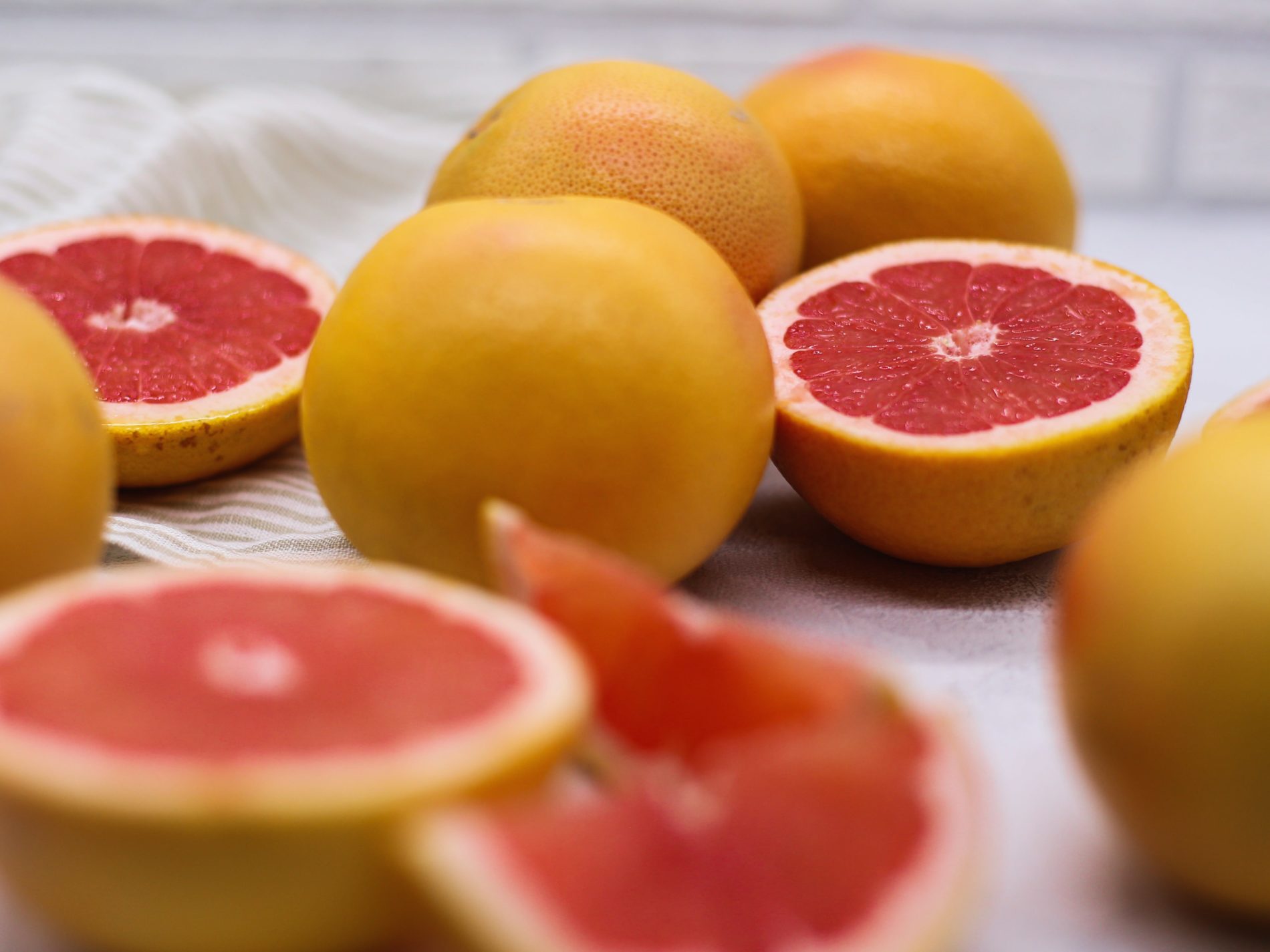Grapefruit, despite its telling name, is not a grape nor does it relate to the genera of vining plants Vitis. It’s an accidental hybrid of the sweet orange and the pomelo. It was first found in Barbados and is said to be one of the Seven Wonders of this island. Everybody loves wonders. And in case you are still wondering why this citrus bears such a name, a search suggests that planter and naturalist John Lunan was the first who published the term ‘grapefruit’. He described the taste of the fruit similar to the grapes. As simple as that. But there is also another explanation: grapefruits grow in grape-like clusters which may have been the cause of the name.
At first, people only knew grapefruits with white flesh. Red and pink varieties came later in the beginning of the 20th century and they immediately became a commercial success. Ruby Red was the popular one at that time.
But you can turn any grapefruit into a red one. One of the most interesting recipes that does that is a dessert called toronja rellena which means ‘stuffed grapefruit’. It’s done by peeling and boiling grapefruits in water with 1 tsp of baking soda, draining and re-boiling them again for 3 times to eliminate the bitter taste, then cooking fruits in plain water-sugar syrup with red dye and a cinnamon stick for 15 minutes until grapefruits are pliable and all red. When this part is done, fruits are stuffed with melted butter, condensed milk (which in Spanish speaking countries is called dulce de leche) and milk powder – all cooked in a saucepan until thickened and divided into appropriate-sized balls.
The fruit is so popular that people have designed special cutlery for it. Like knives and spoons. A grapefruit knife with a curved serrated blade is made in a manner that follows the natural curves of a grapefruit. The other variety is a knife with two parallel blades with a little gap between them that helps dividing each citrus section from each other. You cut the fruit in half, put it on its pole and, starting from the centre, move the knife along the whitish membranes. When all the segments are released in that way, you just get them out with a regular spoon. But there is also a special one – similar to a regular teaspoon but with serration on the end or with a blunt end but with serrated sides. Serration is there to help separating flesh of the fruit from the rind and the membrane. If you don’t like giving a single fruit too much credit, you can call this utensil a citrus spoon or a fruit spoon and eat everything you like with that: from watermelon to persimmon.











What do you think?